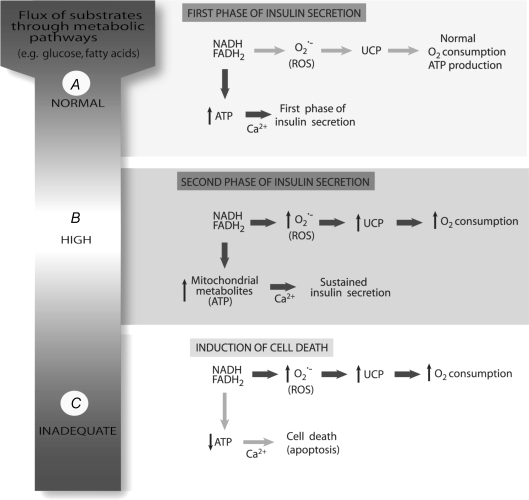Figure 3.
The central role of reactive oxygen species (ROS) and uncoupling protein (UCP) for the first and second phases of insulin secretion or induction of cell death The normal flux of metabolites (e.g. glucose and fatty acids) through metabolic pathways (e.g. TCA cycle) generates NADH and FADH2 that are used by the electron transport chain for proton translocation and ATP synthesis. An increased ATP/ADP ratio leads to elevation of intracellular Ca2+ and the peak of insulin secretion in the first phase (A). The production of ROS and activation of UCP are associated with high metabolic flux required to maintain the ATP/ADP ratio and to sustain insulin secretion for a prolonged period (B). In this situation the O2 consumption is elevated. However, as a consequence of sustained ROS production and UCP activation causing excessive H+ leak, ATP levels will fall resulting in cell death by apoptosis (C).

